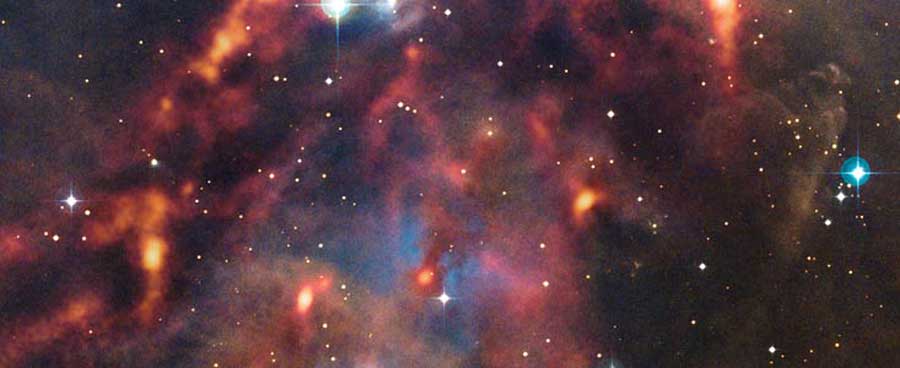In space, dense clouds of cosmic gas and dust are the birthplaces of new stars. In visible light, this dust is dark and obscuring, hiding the stars behind it. So much so that when astronomer William Herschel observed one such cloud in the constellation Scorpius in 1774, he thought it was a region empty of stars and is said to have exclaimed, “Truly there is a hole in the sky here!”
In order to better understand star formation, astronomers need telescopes that can observe at longer wavelengths, such as the submillimeter range, in which the dark dust grains shine rather than absorb light. APEX, which is on the Chajnantor Plateau in the Chilean Andes, is the largest single-dish submillimeter-wavelength telescope operating in the Southern Hemisphere, and it is ideal for astronomers studying the birth of stars in this way.
Located in the constellation Orion the Hunter, the Orion Molecular Cloud Complex, which is 1,500 light-years away, is the closest region of massive star formation to Earth and contains a treasury of bright nebulae, dark clouds, and young stars. The new image shows just part of this vast complex in visible light, with the APEX observations overlaid in brilliant orange tones that seem to set the dark clouds on fire. Often, the glowing knots from APEX correspond to darker patches in visible light — the telltale sign of a dense cloud of dust that absorbs visible light but glows at submillimeter wavelengths and is possibly a site of star formation.
The bright patch below of the center of the image is the nebula NGC 1999. This region, when seen in visible light, is what astronomers call a reflection nebula, where the pale blue glow of background starlight is reflected from clouds of dust. The nebula is mainly illuminated by the energetic radiation from the young star V380 Orionis lurking at its heart.
In the center of the nebula is a dark patch. Normally, a dark patch such as this would indicate a dense cloud of cosmic dust, obscuring the stars and nebula behind it. However, in this image we can see that the patch remains strikingly dark, even when the APEX observations are included. Thanks to these APEX observations, combined with infrared observations from other telescopes, astronomers believe that the patch is in fact a hole or cavity in the nebula excavated by material flowing out of the star V380 Orionis. For once, it truly is a hole in the sky!
The region in this image is located about 2° south of the large and well-known Orion Nebula (M42), which can be seen at the top edge in visible light from the Digitized Sky Survey.










